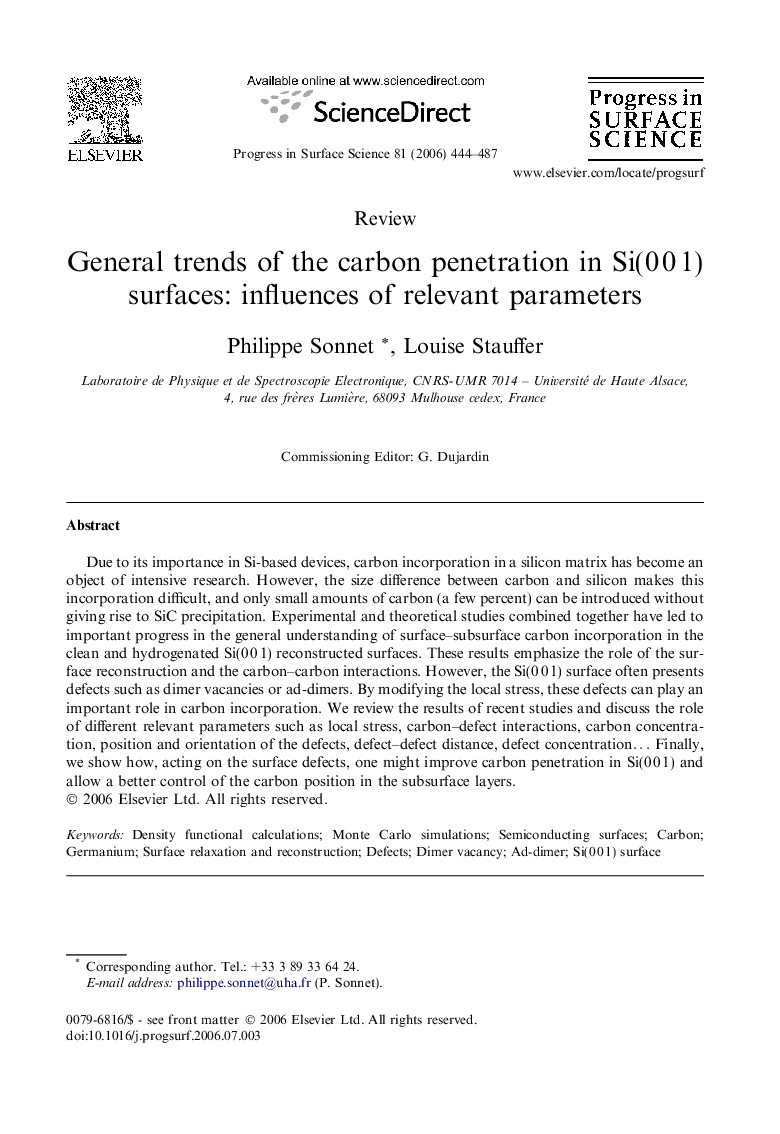| Article ID | Journal | Published Year | Pages | File Type |
|---|---|---|---|---|
| 5420056 | Progress in Surface Science | 2006 | 44 Pages |
Abstract
Due to its importance in Si-based devices, carbon incorporation in a silicon matrix has become an object of intensive research. However, the size difference between carbon and silicon makes this incorporation difficult, and only small amounts of carbon (a few percent) can be introduced without giving rise to SiC precipitation. Experimental and theoretical studies combined together have led to important progress in the general understanding of surface-subsurface carbon incorporation in the clean and hydrogenated Si(0 0 1) reconstructed surfaces. These results emphasize the role of the surface reconstruction and the carbon-carbon interactions. However, the Si(0 0 1) surface often presents defects such as dimer vacancies or ad-dimers. By modifying the local stress, these defects can play an important role in carbon incorporation. We review the results of recent studies and discuss the role of different relevant parameters such as local stress, carbon-defect interactions, carbon concentration, position and orientation of the defects, defect-defect distance, defect concentration⦠Finally, we show how, acting on the surface defects, one might improve carbon penetration in Si(0 0 1) and allow a better control of the carbon position in the subsurface layers.
Keywords
Related Topics
Physical Sciences and Engineering
Chemistry
Physical and Theoretical Chemistry
Authors
Philippe Sonnet, Louise Stauffer,
